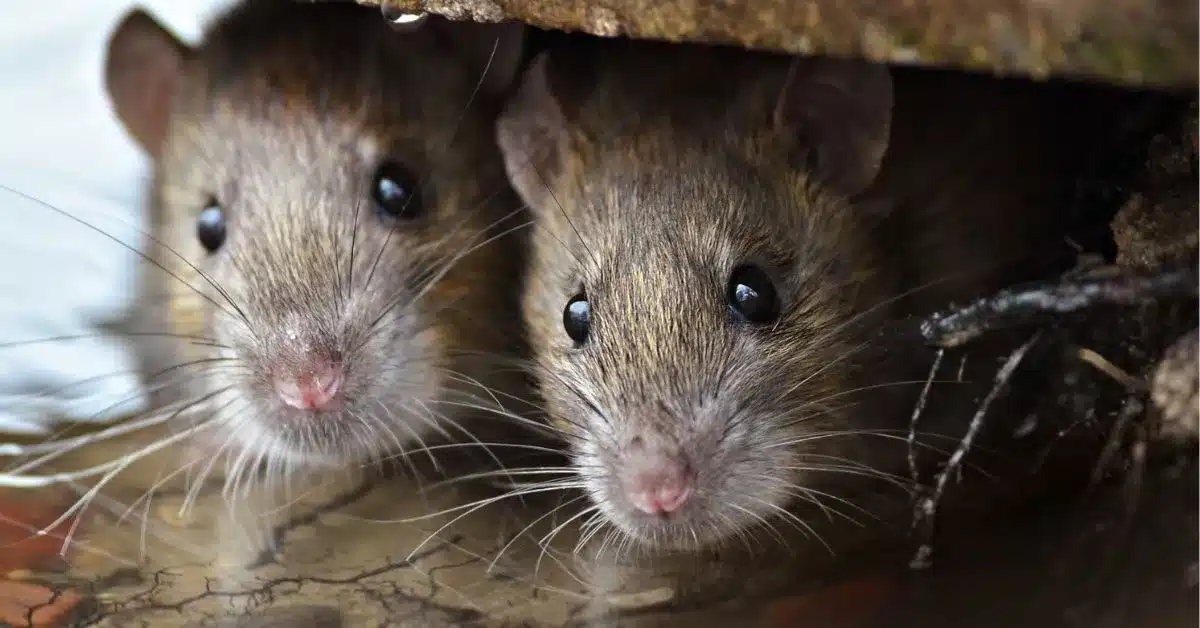
Rodent Exclusion: How to Find Rat & Mice Entry Points
If you see rats or mice in your home, you will want to use a professional pest control company to trap the interior, bait the exterior, and complete a rodent exclusion on your home to prevent rodent entry as soon as possible. The telltale signs of a rodent infestation can send shivers down your spine: scratching in the walls, squeaking noises at night, droppings in the cupboard, grease staining, and more. Rats and mice are more than just unsettling houseguests. They carry disease and can spread it to humans through a variety of methods. According to the Centers for Disease Control and Prevention (CDC), the Covid-19 pandemic has caused an increase in rodent activity as more people are cooking from home instead of visiting restaurants. Unfortunately, that has meant rodent trouble for homeowners. Read on to learn more about the rodent exclusion experts at Hulett to learn how this process can help rid your home of rats and mice and prevent them from returning.
What Is Rodent Exclusion?
Mouse or rat exclusion stops your rodent problem at the source. During the rodent exclusion process, the entry points the rodents use to gain access into your home are identified and eliminated to prevent them from entering in the future. They might be using a variety of entry points, and different techniques are necessary to eliminate them. This is why a professional is required. This will stop rodents from entering your home in the first place and prevent future infestations. Rodent exclusion alone cannot eliminate an existing rat or mouse infestation, and trapping and baiting may be required.
Why Do Rodents Enter a Home?
These invaders enter your home in search of food, water, and shelter. Like humans, rats and mice are mammals and need to maintain a warm body temperature to survive. While we get mild winters in South Florida, the slight dip in temperatures can send them searching for shelter indoors around this time of year. During the late fall, winter, and early spring, there is typically an increase in rodent invasion, especially near the holidays with all of the cooking.
Certain factors make some homes more attractive to them than others. Covered areas in your yard can draw them to your property and provide shelter. Yard debris, overgrown shrubs, leaf piles, compost piles, woodpiles, boats or RVs, and improperly sealed sheds, outdoor kitchens, or outbuildings make great nesting locations for mice and rats. Any food sources in your yard attract rodents, too. Garbage containers, grills, bird feeders, pet food, and pet waste can lure rodents. Trees that grow fruits or nuts also appeal to rats and mice. Eventually, these four-legged creatures may leave your yard and find their way indoors.
In addition to the warm temperatures, your home can offer them nourishment. Once inside, they feed on groceries, stored food, pet food, food crumbs and spills, and drink from leaky faucets and appliances. Of course, the rodents can only access the food and water inside your home if they can find an entry point to gain access.
Hazards of Rodent Infestations
Rats and mice can inspire terror in some people. There’s a good reason for that. According to the CDC, rats and mice are responsible for spreading more than 35 diseases worldwide. There are many ways to catch diseases from rodents. You can pick up diseases directly from them by handling or being bitten by them or coming into contact with their urine, feces, or saliva. Or when ticks, mites, and fleas feed on an infected rodent, these insects can also transfer diseases to humans.
How to Find Rodent Entry Points
Whether dealing with the House Mouse, Norway Rat, Roof Rat, Black Rat, etc., how to find rodent entry points can be difficult. Rodents can enter your home through tiny openings. Any opening that is larger than a quarter-inch wide is a potential entry point for them. There are specific locations where rodents are more likely to enter, and you can look for signs of rodent activity to help you narrow in on the most likely entry points. If you see any of the following signs, you may be close to a rodent entry point:
- Droppings
- Urine smells and stains
- Gnaw marks
- Burrows
- Grease marks
- Runways
- Nests in insulation
- Tracks and footprints
Doing a complete inspection of your home’s interior and exterior is recommended, but the above signs of rodent activity can help you more effectively pinpoint entry points. Regardless of where the rats or mice are entering, any openings you find that are a quarter-inch or larger should be filled.
Check Common Rodent Entry Points
As you inspect your home, some common areas warrant closer examination. Look in the following locations for common rodent entry points.
Foundations and Walls
Around the perimeter of your home, look for gaps or flaws where the wall siding meets the foundation. These openings are common entry points.
Pipes
Rodents can chew holes in plastic pipes and enter your home through the pipes. Or, if there is cast-iron plumbing that is deteriorated, there may be openings around pipes under sinks or washing machines or going to hot water heaters, that also provides another entry point. These may need to be addressed by a plumber.
Windows and Doors
Check doors and windows to ensure that the distance between them and the threshold is less than a quarter-inch. Check carefully under and around any exterior doors. If you frequently open doors or windows for ventilation, make sure they are equipped with screens or screen doors. Avoid any unnecessary ledges on windows.
Vents and Air Conditioning
Inspect the vents and duct openings near heating and air conditioners. These openings should either be elevated or equipped with a screen or other excluder device designed to prevent rodents from entering. Make sure there are no holes in the screen or nearby shrubs or trees that could act as a bridge for rodents. The condensing unit line, a black line running from the exterior A/C unit into the house, is also a common entry point.
Garage Door Seals
Rubber is the most common material that is used to seal a garage door. Sometimes rodents will chew through it. If you see gnawed pieces of rubber around your garage door, rodents may be using it as an entry point.
Roofs and Gutters
Look among rafters, roof intersections, soffit vents that are torn, gables, and eaves for any signs of openings on your roof, especially if there are trees and plants nearby.
Around Holes for Electrical, Gas, and Cable Lines
Look for gaps and space around the spots where these lines enter your home.
Indoor Entry Points
Rodents need an entry point to get into your home, but that doesn’t necessarily give them immediate access to your food pantry and cabinets. Once inside, they have to find or create an opening that gives them access to food and water. Look for gaps around the following locations:
- Kitchen cabinets, refrigerators, and stoves (check inside and underneath)
- Fireplaces
- Closets near floor corners
- Floor vents and dryer vents
- Attics
- Crawl spaces
- Laundry room floor drains
- Doors
- Where the flooring meets the wall juncture
Sealing Rodent Entry Points
Sealing rodent entry points is often a very tricky thing to complete. Depending on the entry point, there are multiple different techniques and materials that should be used. Whether that is caulking, steel wool, screening, hardware cloth, etc. For this reason, exclusions are best left for the professionals, not to mention finding and accessing all of the difficult to reach entry points on the roof.
Sanitation
Sanitation is key to getting rid of a rodent infestation. Follow these steps to make it harder for rodents to find food and water in your home and around your property:
- Remove piles of yard debris.
- Eliminate outdoor food sources like pet food or birdfeeders.
- Clean up fallen fruit or nuts from trees. Pick ripened fruit and nuts immediately.
- Store food in sealed plastic or metal containers.
- Clean up food spills and particles immediately.
- Make sure all garbage cans have tightly sealed lids.
- Fix leaky faucets or appliances.
What Hulett Can Do
When most homeowners come eye to eye with a rat, they call in the professionals immediately. No homeowner likes to deal with rodents on their own, and eliminating an infestation can be very tricky. At Hulett, we regularly eliminate rodent infestations from South Florida homes. We use trapping, monitoring of exterior rodent bait boxes, and exclusions and rodent-proofing of homes to get rid of the rodents in your home. Training and education are a core part of our business, and we educate our experienced and friendly technicians on the latest methods and techniques for addressing rodent problems in South Florida. Contact Hulett for pest control for rodents today!



